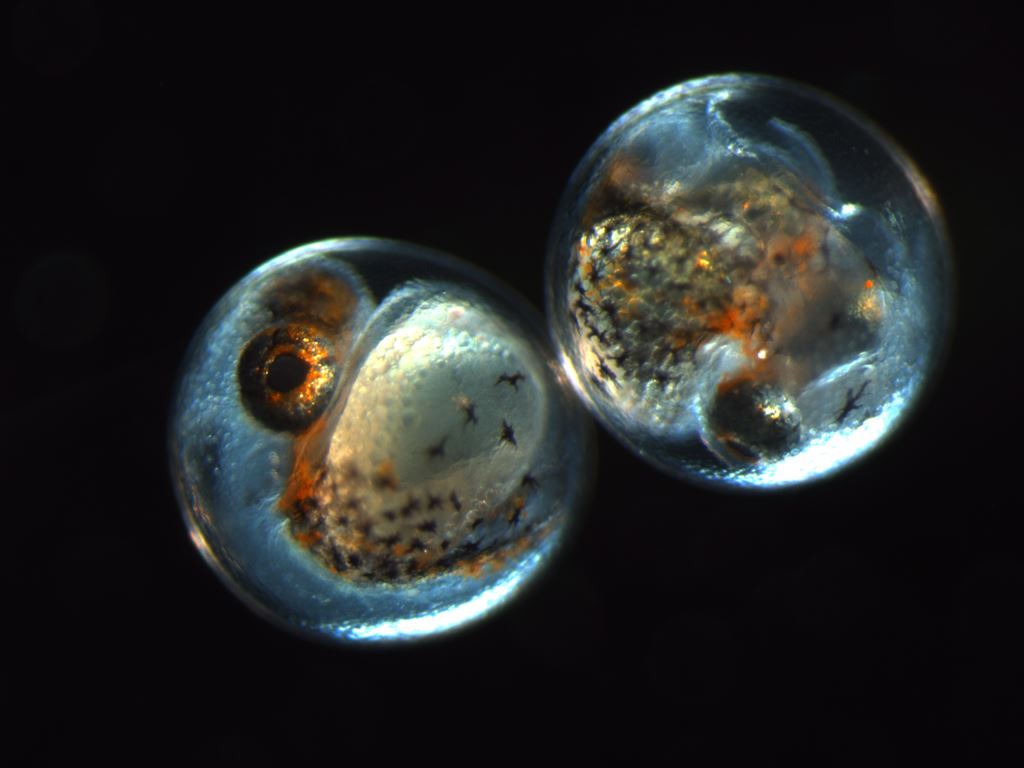Two articles have been published in Aquaculture:
V. Gallego, L. Pérez, J.F. Asturiano, M. Yoshida. Study of pufferfish (Takifugu niphobles) sperm: Development ofmethods for short-term storage, effects of different activation media and role of intracellular changes in Ca2+ and K+ in the initiation of sperm motility. Aquaculture 414–415 (2013) 82–91.
Abstract: The first goal of this study was the development of a short-term storage method for pufferfish (Takifugu niphobles) sperm. In this respect, the best results were obtained by diluting the sperm in a seminal-like solution and keeping it in a Petri dish in chilled storage (4 °C). This method was successful in preserving sperm quality parameters without resulting in differences in fresh sperm for a relatively long-term period (7 days), for use in aquaculture matters. The addition of bovine serum albumin (BSA) to the medium did not improve the results. On the other hand, both the osmolality and the ion composition of themedia are essential factorswhich canmodulate the sperm motility parameters. The osmolality of the activating medium was the most important factor in triggering pufferfish sperm motility, and osmolalities of 750–825 mOsm/kg were necessary to initiate this process, demonstrating that it appears to be a dose-independent mechanism. Regarding the ion composition of the activationmedia, this study has shownthat despite the spermatozoa being able to initiatemovementwithout any ion in the activationmedium, the absence of ions can negatively affect the kinetic parameters of the spermatozoa. Finally, in natural conditions (seawater), the activation of sperm motility generates intracellular increases in Ca2+ and K+, suggesting that these ions play an essential role in the activation mechanismof pufferfish sperm.
V. Gallego, L. Pérez, J.F. Asturiano, M. Yoshida. Relationship between spermatozoamotility parameters, sperm/egg ratio, and fertilization and hatching rates in pufferfish (Takifugu niphobles). Aquaculture 416-417 (2013) 238–243.
Abstract: The use of high quality gametes from both males and females during in vitro fertilization (IVF) trials is an essential step in order to achieve high fertilization and hatching rates. Although aquaculture hatcheries have focused more on egg rather than spermatozoa quality, some studies have demonstrated that sperm quantity and quality have a great influence both on fertilization/hatching success and the subsequent development of the embryo and larvae. In this study we have demonstrated that sperm/egg ratio and sperm quality are factors strongly related to each other in the pufferfish (Takifugu niphobles). Our results suggest that both factors should be taken into account as unique interrelated elements,making possible to obtain high fertilization rates using a successful combination of small amount of high quality sperm or high amount of low quality sperm. In addition, coefficients of correlation and determination among all the sperm motion parameters provided by a CASA systemand fertilization/hatching rateswere estimated for the first time in a marine species. Positive significant correlationswere found in someparameters such as total and progressivemotility (0.68 and 0.7 respectively). However, curvilinear velocity (VCL), straight line velocity (VSL) and average velocity (VAP) showed the highest coefficients of correlation (0.82, 0.8, and 0.81, respectively). In this respect, spermatozoa velocity appears to be a key factor in the fertilization process, especiallywhen the number of spermatozoa per egg is limited in the aqueous environment.

